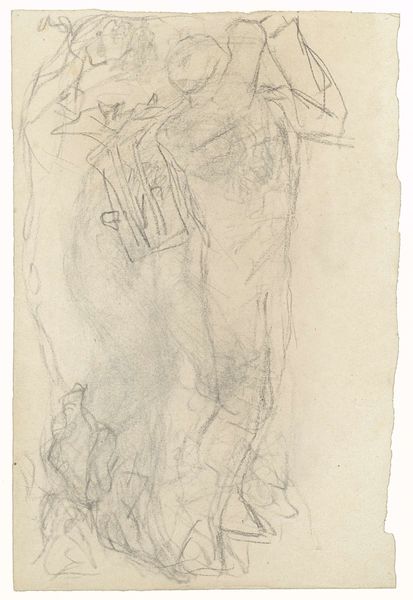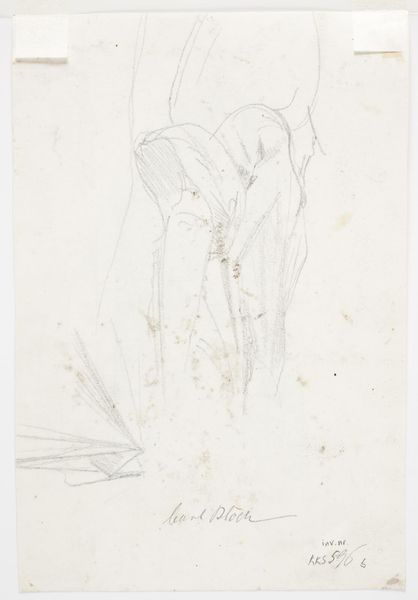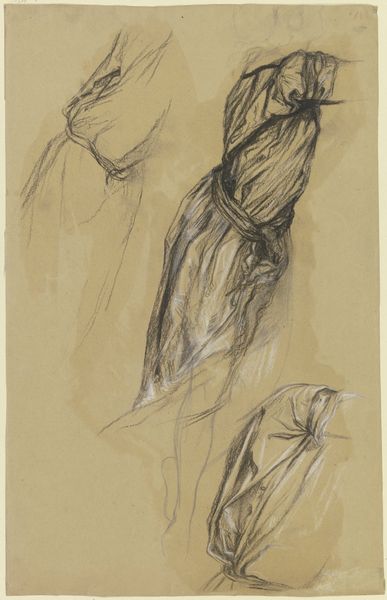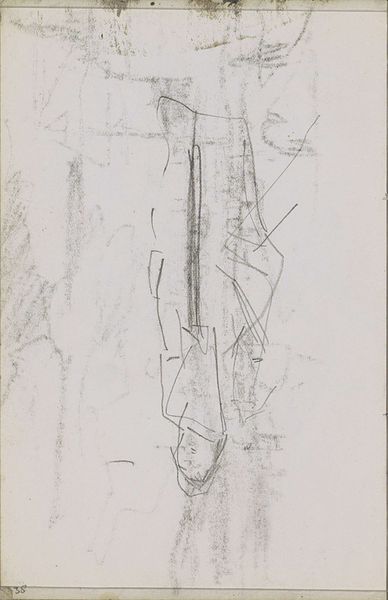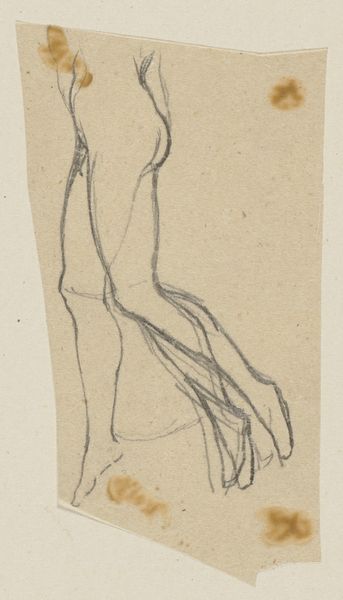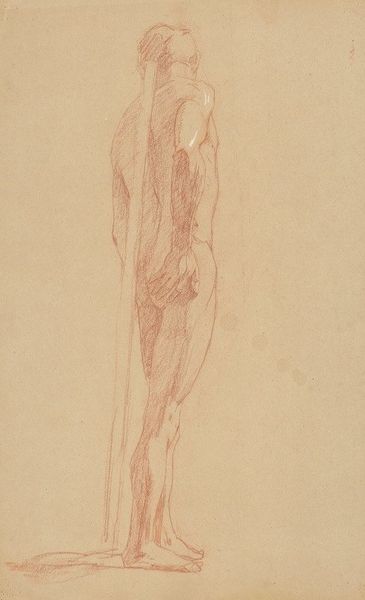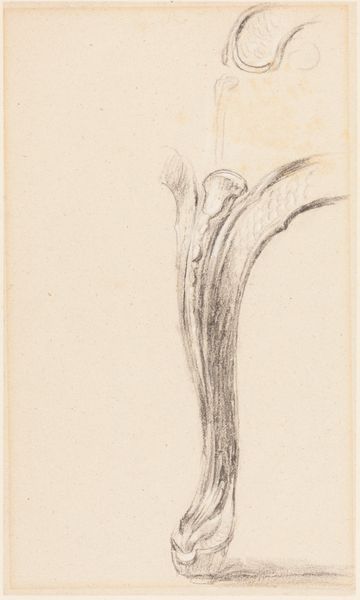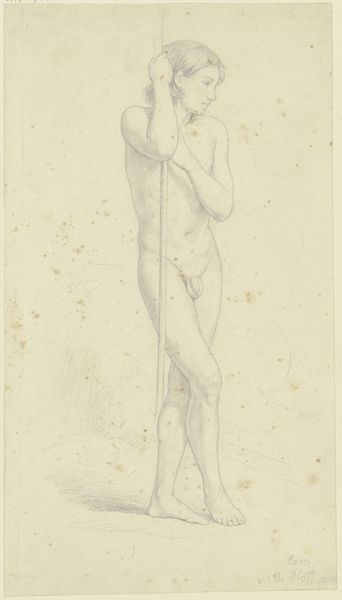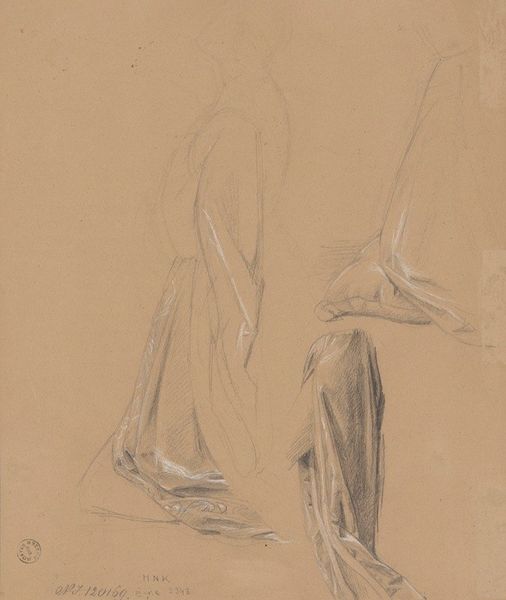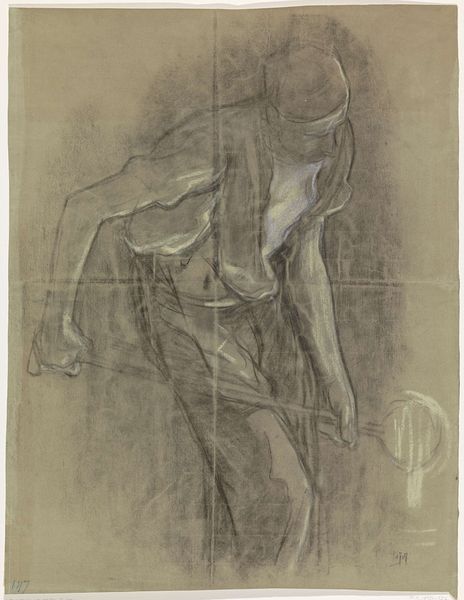
Drapery Study for Sainte-Clotilde (upper register); verso: Standing Soldier; (studies for wall paintings in the Chapel of Saint Remi, Sainte-Clotilde, Paris, 1858) 1825 - 1875
0:00
0:00
drawing, pencil
#
drawing
#
figuration
#
romanticism
#
pencil
#
history-painting
#
academic-art
Dimensions: 17 x 9 3/4 in. (43.2 x 24.8 cm)
Copyright: Public Domain
Editor: This drawing, "Drapery Study for Sainte-Clotilde" by Isidore Pils, dating from the mid-19th century, shows a figure draped in fabric. It's a study in pencil. What immediately strikes me is the contrast between the detailed fabric and the fainter, almost ghostly, figures sketched behind. How do you interpret this work, especially within its historical context? Curator: This study, destined for the Chapel of Saint Remi, offers a window into the intersection of faith, power, and artistic representation during a tumultuous period in French history. The drape itself, so meticulously rendered, becomes symbolic. Consider: what does it conceal and what does it reveal about the relationship between the sacred and the secular? Is the artist exploring these contradictions through visual language? Editor: That's a really interesting point. It's almost as if the drapery itself becomes a character, hiding or revealing something important about the figure beneath. But what about the figures in the background? They're much more indistinct, almost like ghosts. Curator: Precisely. The "ghostly" soldiers, when viewed through the lens of feminist and post-colonial theories, for instance, allows us to see the social and historical complexities of the period. The visible yet hidden power structures influence even this seemingly simple study. This layering invites us to ask: whose stories are privileged and whose are obscured in these historical narratives? How does religious art contribute to constructing and maintaining certain power dynamics within society? Editor: Wow, I never considered the layering as a statement on whose stories are privileged. That's so much more impactful than simply thinking of it as a study of folds and fabric. Curator: Exactly! Engaging with art history alongside contemporary theory, it becomes possible to draw out these narratives around identity, gender, race, and politics, opening up the potential for more nuanced readings. It encourages dialogue, doesn’t it? Editor: Absolutely. I’m seeing this work with completely new eyes. Thanks!
Comments
No comments
Be the first to comment and join the conversation on the ultimate creative platform.

